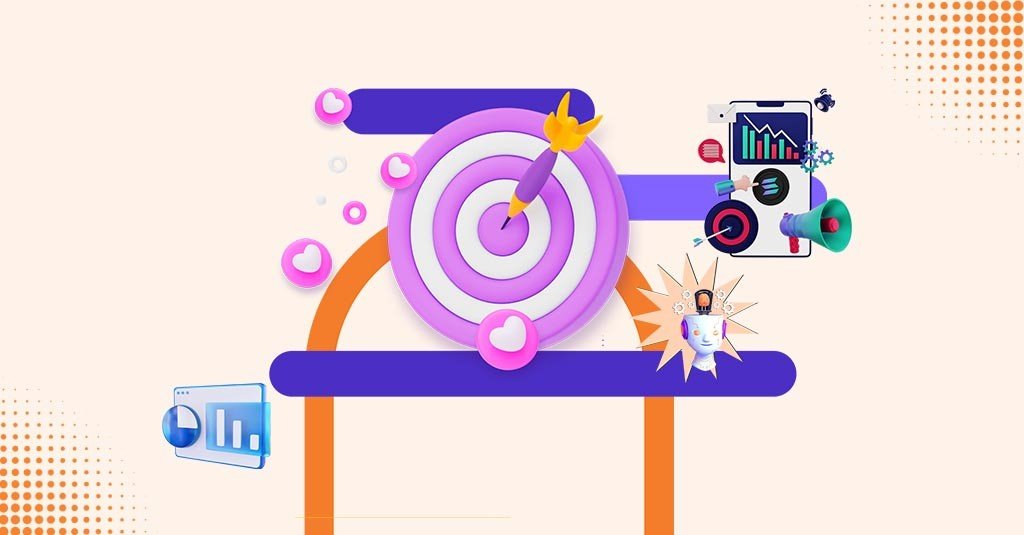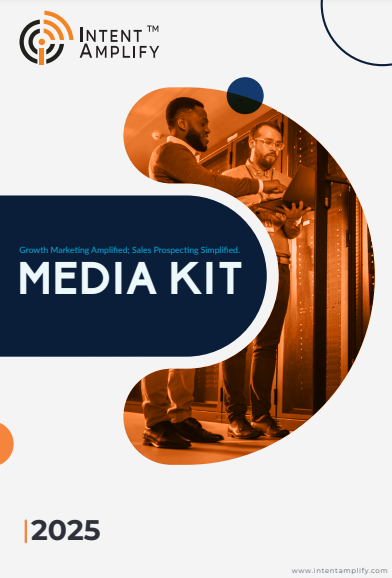
GenAI in Customer Success: Redefining B2B Lead Generation in 2025
- Last updated on: May 9, 2025
In 2025, GenAI in customer success is not a novelty; it’s a necessity. The competitive edge no longer lies in who fills the top of the funnel fastest; it lies in who keeps that funnel flowing profitably, quarter after quarter. For modern B2B marketers and revenue teams, generative AI has become the secret engine turning customer success from a reactive cost center into a proactive growth driver.
Customer Retention: The New Battleground
For years, lead generation hogged the spotlight in B2B marketing budgets. But times have changed. Research from Bain & Company shows that increasing customer retention by just 5% can boost profits by as much as 95%. That’s a staggering ROI compared to endlessly chasing new leads. The reality is simple: in a mature B2B market, acquisition costs keep climbing while buyer patience keeps shrinking. Organizations that rely solely on net-new leads are fighting a losing battle. Leaders now focus equally, if not more, on nurturing existing relationships, growing customer lifetime value, and turning satisfied clients into expansion opportunities.How GenAI Is Rewiring Customer Success
Much of the hype around generative AI centers on content creation: blogs, emails, and social posts. But its true potential runs deeper, especially in customer success. Modern GenAI helps revenue teams understand customer behavior, predict churn before it happens, and deliver personalized experiences at scale. Below are the three biggest ways GenAI transforms B2B customer success in 2025:Narrative Reporting That Makes Metrics Matter
Traditional reports frustrate executives. They’re stuffed with KPIs yet fail to explain what’s working, what isn’t, and what to do next. GenAI turns raw data into narrative insights. Picture this: instead of sending your customer a static usage dashboard, your CSM delivers a weekly email that reads like a personalized briefing: “Last week, your team’s usage increased by 18% due to new onboarding flows. We recommend activating Feature X next to accelerate ROI by 27% based on similar accounts.” Tools like Tableau’s GPT integrations and Notion AI already enable this, converting data points into actionable stories. Clients feel understood, guided, and confident about the next steps with an analyst.Real-Time Campaign Optimization
In a traditional setup, customer success teams rely on quarterly or monthly reviews to spot problems. By then, it’s often too late. GenAI fixes this by monitoring performance signals in real time and recommending instant tweaks. For example, if open rates for a nurture sequence drop below 10%, GenAI triggers a recommendation: “Switch to Subject Line Variant B, it improved response rates by 42% for similar accounts last quarter.” Platforms like Metadata.io are pioneers here using AI to optimize campaigns mid-flight, reallocating budgets, swapping creatives, and tweaking CTAs automatically to rescue ROI before humans even see a dip.Human-Like, Contextual Engagement at Scale
Your customer success managers have a finite number of hours. GenAI doesn’t. It generates smart, on-brand follow-ups that feel personal, not robotic. Tools like Lavender and Jasper are already used by SDRs to craft 1:1-style check-ins that match each client’s history and tone. Whether it’s a gentle nudge to attend a QBR or a quick pulse-check email, GenAI ensures no customer feels neglected. This frees CSMs to focus on relationship-building and strategic conversations, while AI handles routine touchpoints consistently.Real-World Example: Drift’s AI Concierge
Consider Drift, a leading conversational marketing platform. Their AI-powered success concierge supports customers 24/7. It doesn’t just answer FAQs, it recommends next best actions based on historical success data. If a SaaS customer hasn’t yet activated a proven onboarding playbook, Drift’s concierge flags it and nudges the CSM to reach out. This blend of AI-driven suggestions and human follow-up has helped Drift reduce churn and boost expansion revenue, a clear signal that smart automation doesn’t replace people, it supercharges them.5 Steps to Build a GenAI-Powered Customer Success Engine
Ready to embed GenAI in your customer success strategy? Use this practical blueprint to roll out AI step by step and avoid the common pitfalls that slow many B2B teams down.Step 1: Audit Your Tech Stack
Start by examining your current CRM, marketing automation, and support platforms. Verify that each system can share clean, real-time data with your GenAI tools, because disconnected systems undermine accurate insights and automated actions.Step 2: Define Clear Objectives
Set specific, measurable goals for your GenAI implementation. For example, aim to reduce churn by 20% over six months or boost upsell revenue by 30% year-over-year, then align your AI workflows to support those numbers.Step 3: Start Small with Narrative AI
Don’t try to automate everything on day one; begin with narrative reporting, which adds immediate value and builds stakeholder confidence. Use tools like Tableau GPT or Notion AI to convert raw performance metrics into clear, actionable stories for your customers.Step 4: Automate Predictive Alerts
Implement AI models that monitor your customer health scores and usage patterns to spot early signs of churn or expansion opportunities. Set up automated alerts that prompt your CSMs to reach out proactively, turning risks into retention and upsell wins.Step 5: Scale Personalized Outreach
Equip your customer success and sales development reps with GenAI-powered writing assistants to craft customized, on-brand follow-ups at scale. This ensures no customer feels forgotten while freeing your team to focus on high-value, strategic conversations that strengthen relationships.Pitfalls to Avoid
Even the best-intentioned GenAI strategy can backfire if you overlook these common traps. Learn from where others have stumbled, so your investment drives real value, not just hype.1. Underestimating Integration Complexity
One of the biggest roadblocks to GenAI’s success is poor data flow between systems. AI thrives on high-quality, unified data, but most B2B companies still have fragmented CRMs, scattered marketing automation, and disconnected analytics. When your AI tool can’t pull real-time usage data or push insights back into the CRM, you lose the proactive edge GenAI promises. Worse, your reports and recommendations may be outdated or incomplete, undermining trust with clients. Before rolling out GenAI, map out your entire customer data ecosystem. Audit your CRM, email tools, support platforms, and analytics dashboards. Invest in middleware or integration APIs if needed. Some companies even appoint a dedicated Data Steward to keep everything synced and clean.2. Over-Automating Customer Interactions
Generative AI can craft convincing emails, auto-summarize meetings, and handle repetitive check-ins. But the temptation to replace human touchpoints entirely is risky. Clients, especially high-value enterprise buyers, still crave genuine relationships. If your customers feel they’re talking to a bot at every stage, trust erodes. Instead of seeing you as a partner invested in their success, they might see you as a faceless vendor automating them away. Use GenAI for repetitive, low-value tasks, such as status updates, reminders, or standard follow-ups. But keep your human CSMs and account managers front and center for strategy calls, escalations, and nuanced problem-solving. Think of AI as the co-pilot, not the pilot.3. Neglecting Human Training
Another overlooked pitfall: teams assume the AI will run itself. In reality, success depends on humans knowing when and how to leverage AI insights. CSMs need training to interpret AI-generated recommendations and to trust (or override) them wisely. Without this, your team might ignore AI suggestions altogether, or worse, follow flawed prompts blindly, risking awkward missteps with clients. Pair AI rollout with internal training sessions. Teach your teams how the AI works, when to act on its insights, and when to rely on human judgment. Many top B2B companies even build AI “playbooks” so everyone knows best practices.4. Forgetting Governance and Compliance
GenAI tools process large amounts of customer data. Without proper safeguards, you risk data privacy breaches or violating compliance standards like GDPR or CCPA. Work closely with your legal and compliance teams from day one. Vet AI vendors carefully: ensure they follow data encryption, role-based access, and transparent audit trails. Make privacy part of your customer success promise, not an afterthought.What This Means for B2B Lead Gen in 2025
Lead gen doesn’t end with a hand-off to sales anymore. Clients demand value throughout the lifecycle from first touch to renewal and upsell. GenAI helps B2B companies deliver this without ballooning headcount or burning out teams. Companies that get this right won’t just keep existing customers, they’ll turn them into advocates who feed the top of the funnel organically.Key Takeaway
Customer success is no longer an afterthought; it’s the backbone of sustainable growth. In the age of GenAI, winning B2B teams focus on intelligent, proactive customer support that protects revenue and creates new opportunities. If you’re still seeing customer success as a cost center, it’s time to change the lens. Because your competitors are already redefining it as the ultimate growth engine, powered by generative AI.FAQs
Q1 What is GenAI in customer success? Generative AI applies machine learning to automate personalized reporting, real-time campaign tweaks, and human-like client communications to boost retention and upsell. Q2 Which companies use GenAI for customer success? Leaders like Drift, HubSpot, Salesforce, and Metadata.io actively deploy GenAI to reduce churn and scale support. Q3 How does narrative reporting work with GenAI? Instead of static dashboards, GenAI transforms performance metrics into easy-to-read stories, highlighting key trends and recommended actions. Q4 Is GenAI expensive to implement? It depends. Many CRMs and customer success tools now offer built-in AI features. Starting with reporting and outreach automation is cost-effective and shows quick ROI. Q5 What’s the biggest mistake teams make? Over-automating and under-integrating. GenAI must work with clean, connected data and supplement, not replace, authentic human engagement. Contact Us for Sales
Ricardo Hollowell is a B2B growth strategist at Intent Amplify®, known for crafting Results-driven, Unified... Read more
Ricardo Hollowell is a B2B growth strategist at Intent Amplify®, known for crafting Results-driven, Unified campaigns that leverage Targeted outreach, Intent-based engagement, and Key Account Insights to help tech brands convert interest into revenue. With decades of hands-on experience, He has also worked behind the scenes on campaigns that empower financial platforms to scale securely and help cybersecurity innovators connect with decision-makers at the enterprise level. With a deep understanding of performance marketing and full-funnel demand generation, Ricardo specializes in designing omnichannel programs that align content, data, and intent signals to fuel measurable pipeline growth. Read less



